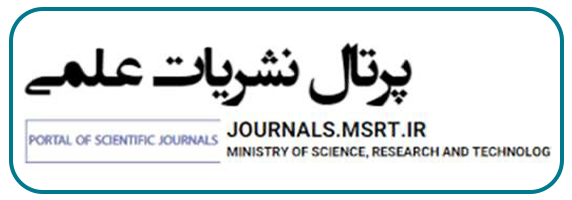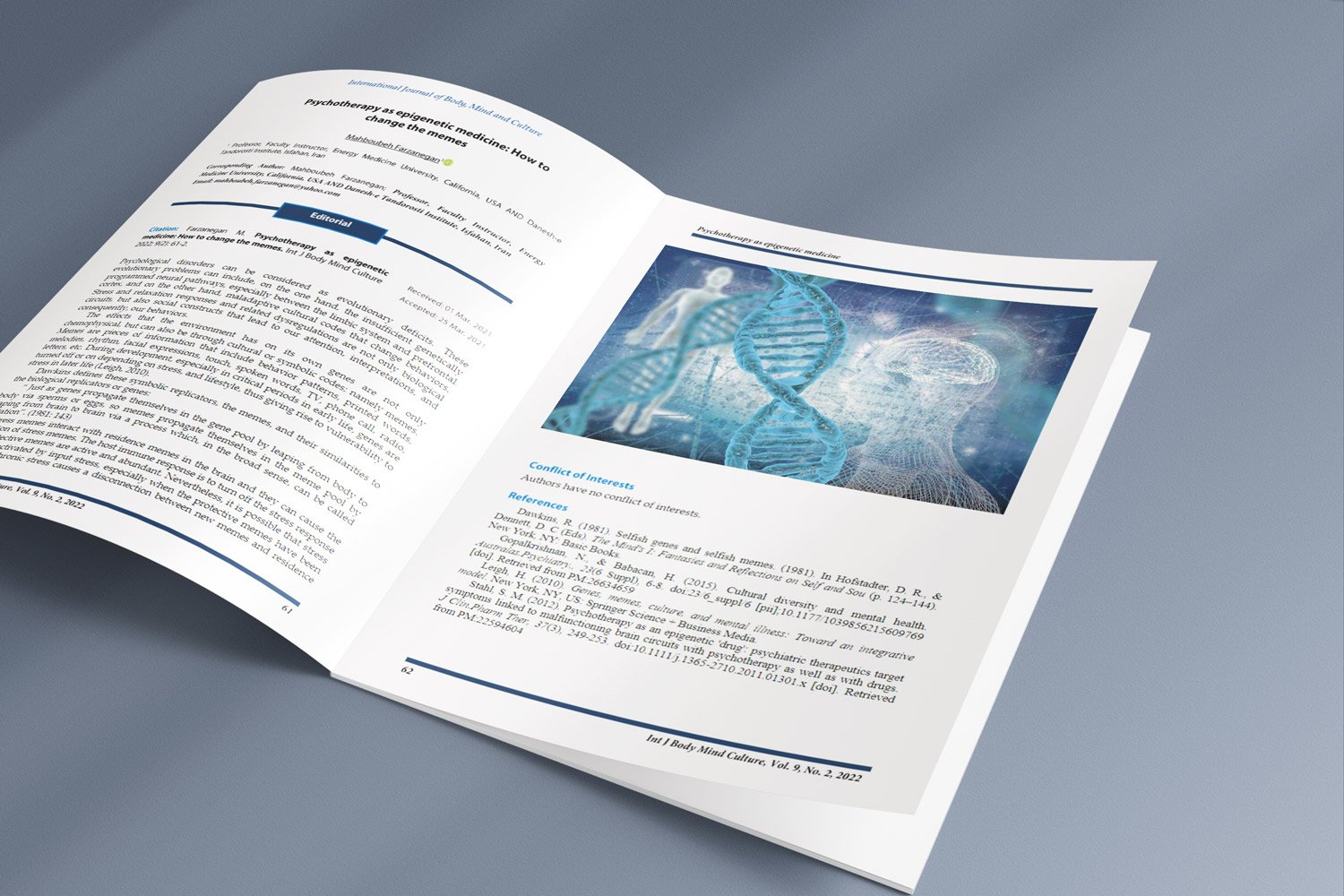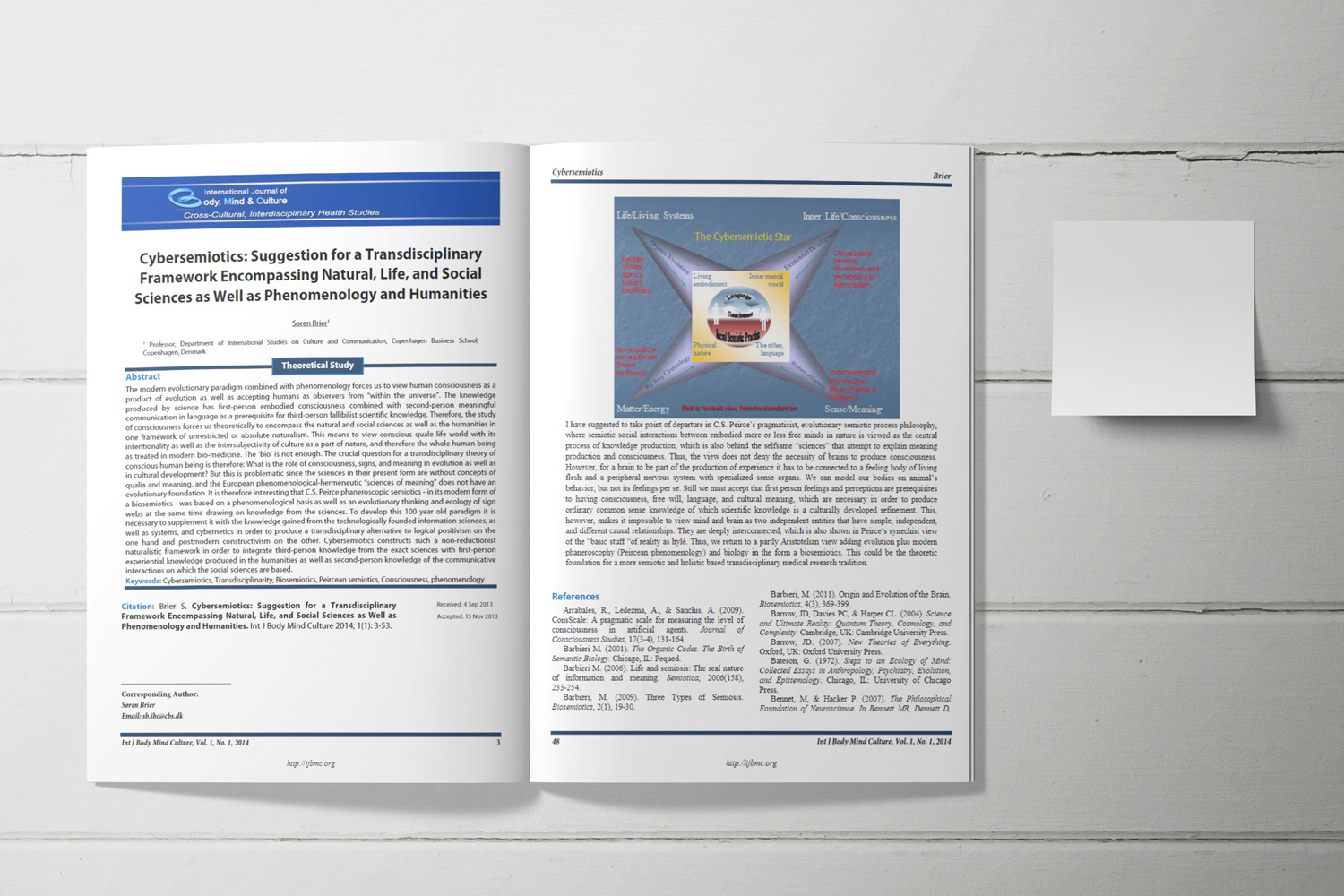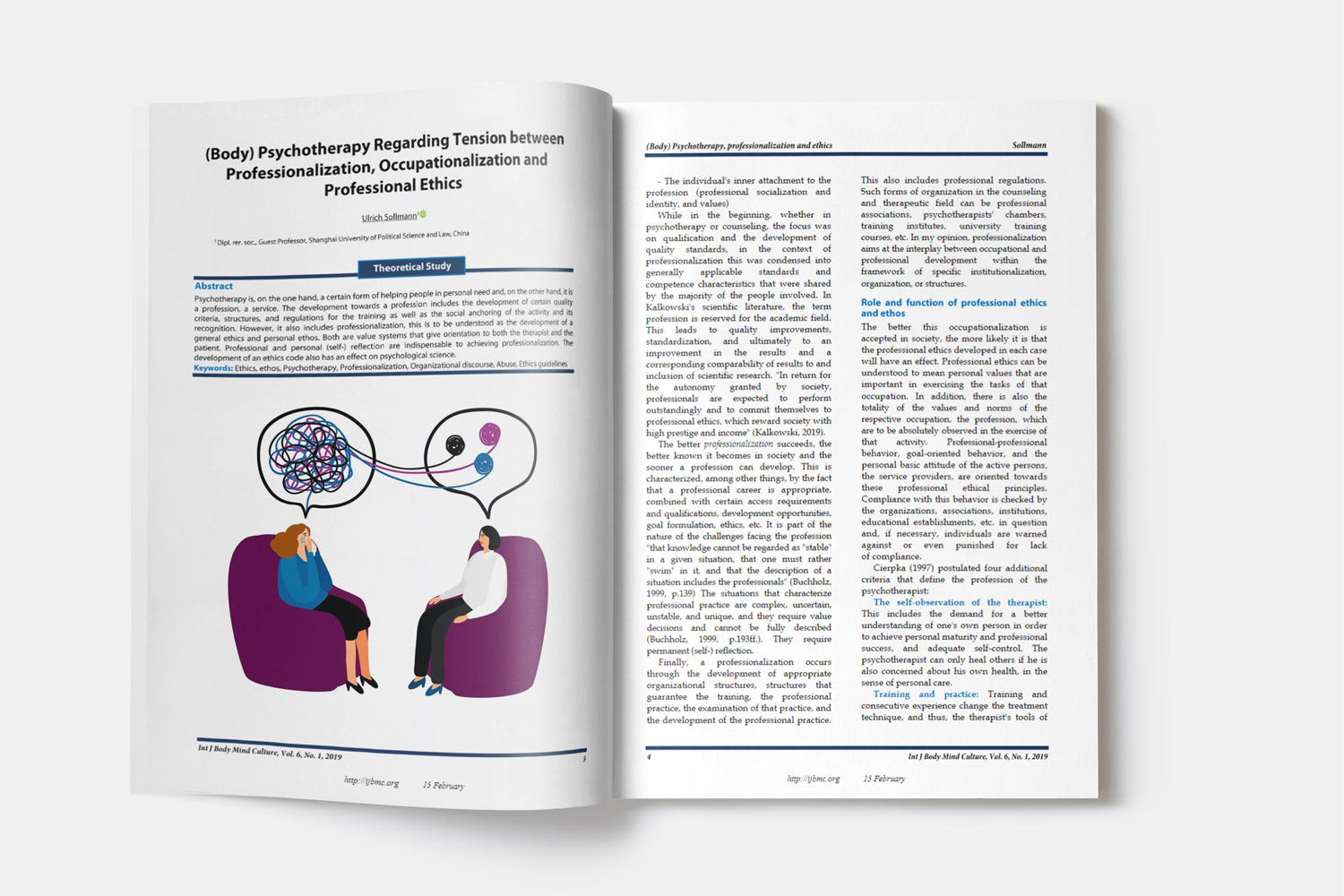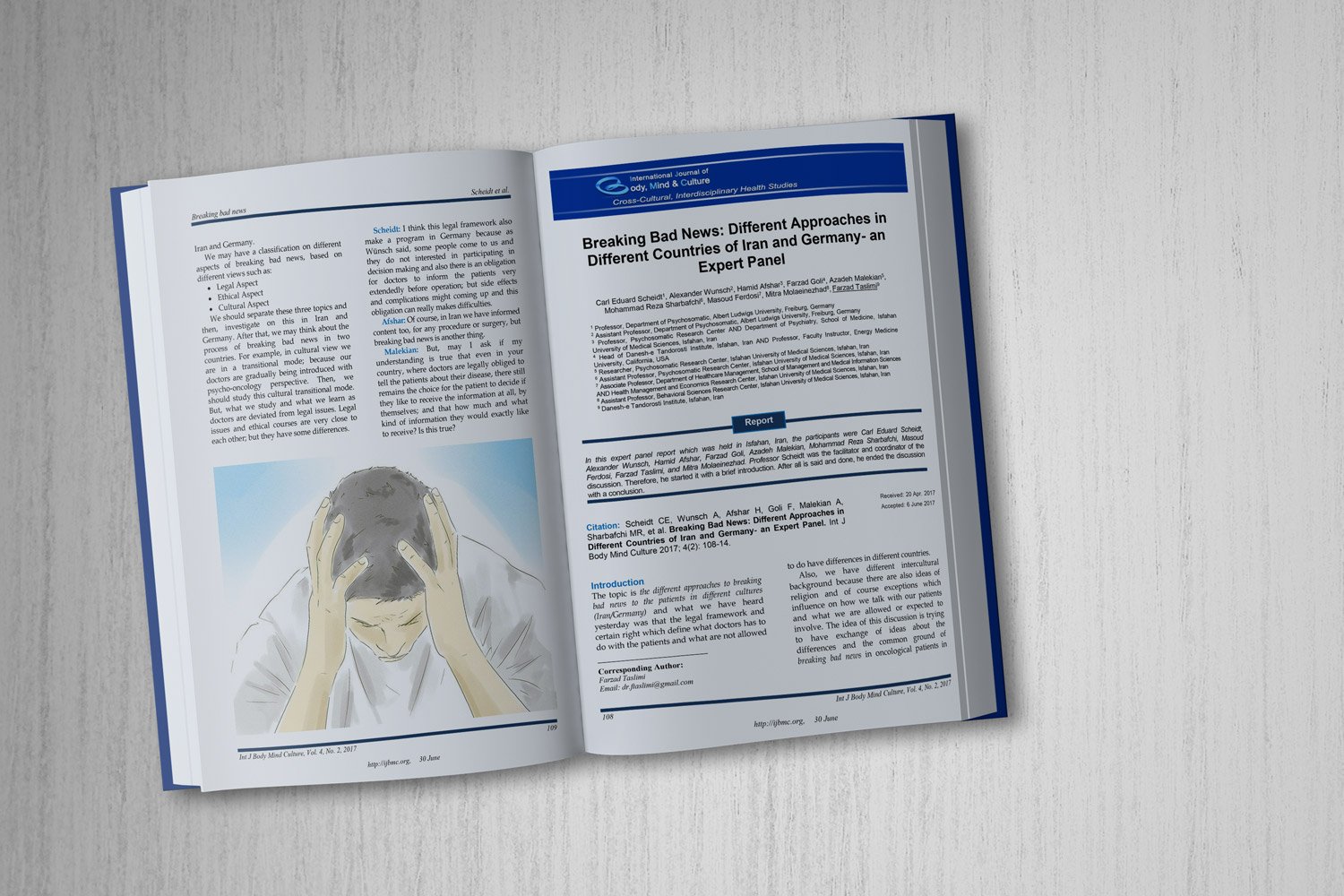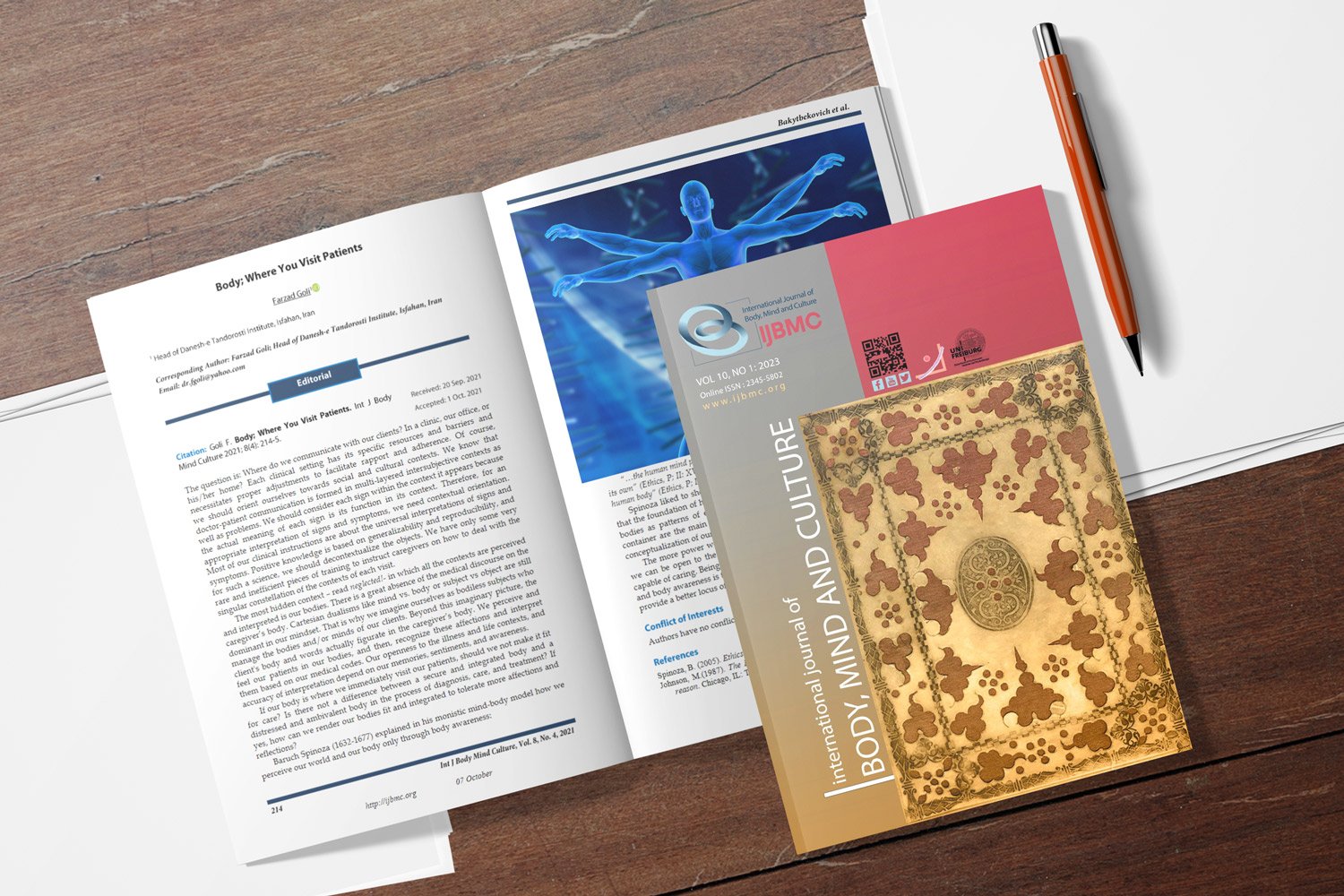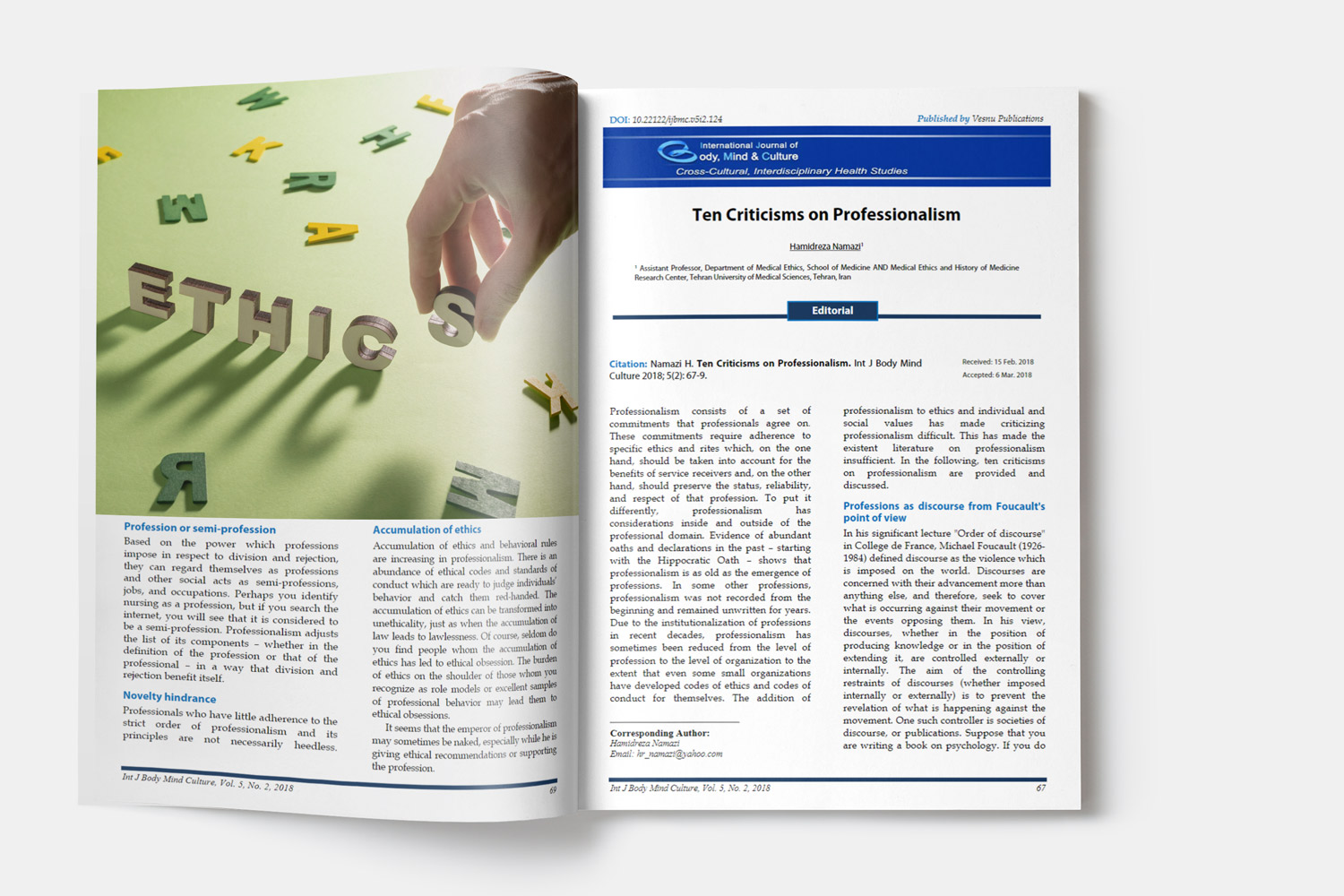The Mediating Role of Conscientiousness and Openness to Experience in the Relationship of Pain Self-Efficacy, Pain Management Strategies, and Resilience with Pain Perception in Chronic Pain Patients
Downloads
Background: Personality variables play an important and pivotal role in the multifaceted biopsychosocial model of chronic pain. The present study was performed with the aim to examine the mediating role of conscientiousness and openness to experience in the relationship of pain self-efficacy, pain management strategies, and resilience with pain perception in chronic pain patients.
Methods: The research method used was correlational and the statistical population included all 2141 patients suffering from chronic pain referred to medical centers in Tehran, Iran, in 2018-2019. Using Cochran’s formula and convenience sampling method 410 patients were selected as the study participants. Data were obtained using the Revised NEO Personality Inventory (Costa & McCrae, 1992), Pain Self-Efficacy Questionnaire (Nicholas, 1989), Coping Strategies Questionnaire (CSQ) (Rosenstiel & Keefe, 1983), Connor-Davidson Resilience Scale (Connor & Davidson, 2003), and the West Haven-Yale Multidimensional Pain Inventory (Kerns, Turk, & Rudy, 1985). The collected data were analyzed using structural equations with partial least squares method in SPSS and Amos software.
Results: The findings of the present study showed that conscientiousness had no mediating role in the relationship between predictor variables of self-efficacy, pain management, and resilience and the criterion variable of pain perception, but openness to experience had a mediating role in the relationship between the above predictor and criterion variables (P < 0.001).
Conclusion: It can be concluded that conscientiousness loses its mediating role in the presence of the variable of openness to experience, and clinically, the variable of openness to experience is effective on pain management.
Downloads
Abdel, Shaheed, C., Maher, C. G., Williams, K. A., Day, R., & McLachlan, A. J. (2016). Efficacy, Tolerability, and Dose-Dependent Effects of Opioid Analgesics for Low Back Pain: A Systematic Review and Meta-analysis. JAMA.Intern.Med, 176(7), 958-968. doi:2522397 [pii];10.1001/jamainternmed.2016.1251 [doi]. Retrieved from PM:27213267
Anno, K., Shibata, M., Ninomiya, T., Iwaki, R., Kawata, H., Sawamoto, R. et al. (2015). Paternal and maternal bonding styles in childhood are associated with the prevalence of chronic pain in a general adult population: the Hisayama Study. BMC Psychiatry, 15, 181. doi:10.1186/s12888-015-0574-y [doi];10.1186/s12888-015-0574-y [pii]. Retrieved from PM:26227149
Asghari, A., & Nicholas, M. K. (2001). Pain self-efficacy beliefs and pain behaviour. A prospective study. Pain, 94(1), 85-100. doi:S0304-3959(01)00344-X [pii];10.1016/s0304-3959(01)00344-x [doi]. Retrieved from PM:11576748
Asghari, A., & Golak, N. (2005). The roles of pain coping strategies in adjustment to chronic pain. Daneshvar Raftar, 12(10 Spec), 1-22.
Bleidorn, W. (2012). Hitting the Road to Adulthood: Short-Term Personality Development During a Major Life Transition. Personality and Social Psychology Bulletin, 38(12), 1594-1608.
Boersma, K., Carstens-Söderstrand, J., & Linton, S. J. (2014). From Acute Pain to Chronic Disability: Psychosocial Processes in the Development of Chronic Musculoskeletal Pain and Disability. In R.J. Gatchel & I. Z. Schultz (Eds.), Handbook of Musculoskeletal Pain and Disability Disorders in the Workplace (pp. 205-217). New York, NY: Springer New York.
Cabak, A., Dabrowska-Zimakowska, A., Truszczynska, A., Rogala, P., Laprus, K., & Tomaszewski, W. (2015). Strategies for Coping with Chronic Lower Back Pain in Patients with Long Physiotherapy Wait Time. Med Sci Monit., 21, 3913-3920. doi:894743 [pii];10.12659/msm.894743 [doi]. Retrieved from PM:26670743
Chan, C. W., & Peng, P. (2011). Failed back surgery syndrome. Pain Med, 12(4), 577-606. doi:10.1111/j.1526-4637.2011.01089.x [doi]. Retrieved from PM:21463472
Chan, J. K., & Consedine, N. S. (2014). Negative affectivity, emotion regulation, and coping in migraine and probable migraine: a New Zealand case-control study. Int J Behav Med, 21(5), 851-860. doi:10.1007/s12529-013-9370-6 [doi]. Retrieved from PM:24242822
Christensen, A. P., Cotter, K. N., & Silvia, P. J. (2019). Reopening Openness to Experience: A Network Analysis of Four Openness to Experience Inventories. J Pers Assess, 101(6), 574-588. doi:10.1080/00223891.2018.1467428 [doi]. Retrieved from PM:29746176
Connelly, B. S., Ones, D. S., Davies, S. E., & Birkland, A. (2014). Opening up openness: a theoretical sort following critical incidents methodology and a meta-analytic investigation of the trait family measures. J Pers Assess, 96(1), 17-28. doi:10.1080/00223891.2013.809355 [doi]. Retrieved from PM:23819531
Costa, P. T., & McCrae, R. R. (1992). Four ways five factors are basic. Pers Individ Dif, 13(6), 653-665.
DeYoung, C. G., Quilty, L. C., Peterson, J. B., & Gray, J. R. (2014). Openness to experience, intellect, and cognitive ability. J Pers Assess, 96(1), 46-52. doi:10.1080/00223891.2013.806327 [doi]. Retrieved from PM:23795918
Donnon, T. (2009). Understanding How Resiliency Development Influences Adolescent Bullying and Victimization. Can J Sch Psychol., 25(1), 101-113.
Edwards, R. R., Dworkin, R. H., Sullivan, M. D., Turk, D. C., & Wasan, A. D. (2016). The Role of Psychosocial Processes in the Development and Maintenance of Chronic Pain. J Pain, 17(9 Suppl), T70-T92. doi:S1526-5900(16)00018-3 [pii];10.1016/j.jpain.2016.01.001 [doi]. Retrieved from PM:27586832
Elsenbruch, S., & Wolf, O. T. (2015). Could Stress Contribute to Pain-Related Fear in Chronic Pain? Front.Behav Neurosci, 9, 340. doi:10.3389/fnbeh.2015.00340 [doi]. Retrieved from PM:26733831
Flor, H., & Turk, D. C. (2015). Chronic Pain: An Integrated Biobehavioral Approach. Philadelphia, PA: Lippincott Williams & Wilkins.
Garousi Farshi, M. T., Mehryar, A. H., & Ghazi Tabatabaei, M. A. H. M. (2001). Application of the NEOP I-R Test and analytic evaluation of it"s characteristics and factorial structure among Iranian university students. Journal of Humanities, 11(39), 173-198.
Gatchel, R. J., McGeary, D. D., McGeary, C. A., & Lippe, B. (2014). Interdisciplinary chronic pain management: past, present, and future. Am Psychol, 69(2), 119-130. doi:2014-04960-002 [pii];10.1037/a0035514 [doi]. Retrieved from PM:24547798
Gewandter, J. S., Dworkin, R. H., Turk, D. C., Farrar, J. T., Fillingim, R. B., Gilron, I. et al. (2015). Research design considerations for chronic pain prevention clinical trials: IMMPACT recommendations. Pain, 156(7), 1184-1197. doi:10.1097/j.pain.0000000000000191 [doi]. Retrieved from PM:25887465
Goldberg, L. R. (1981). Language and individual differences: the search for universals in personality lexicons. Reviews of Personality and Social Psychology, 2(1), 141-165.
Green, J. A., O’Connor, D. B., Gartland, N., & Roberts, B. W. (2015). The Chernyshenko Conscientiousness Scales: A New Facet Measure of Conscientiousness. Assessment, 23 (3), 374-385. doi:doi: 10.1177/1073191115580639.
Haghshenas, H.(1999). Persian version and standardizlJtion of NED Personality Inventory-Revised. Iran J Psychiatry Clin Psychol, 4(4), 38-48.
Jackson, J. J., Wood, D., Bogg, T., Walton, K. E., Harms, P. D., & Roberts, B. W. (2010). What do conscientious people do? Development and validation of the Behavioral Indicators of Conscientiousness (BIC). J Res Pers, 44(4), 501-511. doi:10.1016/j.jrp.2010.06.005 [doi]. Retrieved from PM:21278818
Jensen, M. P., & Turk, D. C. (2014). Contributions of psychology to the understanding and treatment of people with chronic pain: why it matters to ALL psychologists. Am Psychol, 69(2), 105-118. doi:2014-04960-001 [pii];10.1037/a0035641 [doi]. Retrieved from PM:24547797
Johnson, J. A. (1994). Clarification of Factor Five with the help of the AB5C Model. Eur J Pers, 8(4), 311-334.
Kaufman, S. B., Quilty, L. C., Grazioplene, R. G., Hirsh, J. B., Gray, J. R., Peterson, J. B. et al. (2016). Openness to Experience and Intellect Differentially Predict Creative Achievement in the Arts and Sciences. J Pers, 84(2), 248-258. doi:10.1111/jopy.12156 [doi]. Retrieved from PM:25487993
Knight, T., Schaefer, C., Chandran, A., Zlateva, G., Winkelmann, A., & Perrot, S. (2013). Health-resource use and costs associated with fibromyalgia in France, Germany, and the United States. Clinicoecon.Outcomes.Res, 5, 171-180. doi:10.2147/CEOR.S41111 [doi];ceor-5-171 [pii]. Retrieved from PM:23637545
Linton, S. J., & Shaw, W. S. (2011). Impact of psychological factors in the experience of pain. Phys Ther, 91(5), 700-711. doi:ptj.20100330 [pii];10.2522/ptj.20100330 [doi]. Retrieved from PM:21451097
Littlefield, A. K., Sher, K. J., & Wood, P. K. (2010). A personality-based description of maturing out of alcohol problems: extension with a five-factor model and robustness to modeling challenges. Addict.Behav, 35(11), 948-954. doi:S0306-4603(10)00168-1 [pii];10.1016/j.addbeh.2010.06.008 [doi]. Retrieved from PM:20598445
Magyar, M., Gonda, X., Pap, D., Edes, A., Galambos, A., Baksa, D. et al. (2017). Decreased Openness to Experience Is Associated with Migraine-Type Headaches in Subjects with Lifetime Depression. Front.Neurol, 8, 270. doi:10.3389/fneur.2017.00270 [doi]. Retrieved from PM:28690582
Mealer, M., Jones, J., Newman, J., McFann, K. K., Rothbaum, B., & Moss, M. (2012). The presence of resilience is associated with a healthier psychological profile in intensive care unit (ICU) nurses: results of a national survey. Int J Nurs Stud, 49(3), 292-299. doi:S0020-7489(11)00370-1 [pii];10.1016/j.ijnurstu.2011.09.015 [doi]. Retrieved from PM:21974793
Michaelis, C., Kristiansen, M., & Norredam, M. (2015). Quality of life and coping strategies among immigrant women living with pain in Denmark: a qualitative study. BMJ Open, 5(7), e008075. doi:bmjopen-2015-008075 [pii];10.1136/bmjopen-2015-008075 [doi]. Retrieved from PM:26163036
Mike, A., Jackson, J. J., & Oltmanns, T. F. (2014). The conscientious retiree: The relationship between conscientiousness, retirement, and volunteering. J Res Pers, 52, 68-77. doi:10.1016/j.jrp.2014.07.002 [doi]. Retrieved from PM:25843985
Mike, A. , Harris, K., Roberts, B. W., & Jackson, J. J. (2015). Conscientiousness. In: International Encyclopedia of the Social & Behavioral Sciences: Second Edition (pp. 658-665). St. Louis, MO: Elsevier Inc.
Mirzamani, S. M., Safari, A. K. B. A., Holisaz, M. T., & Sadidi, A. (2007). Validation of the West Haven-Yale Multidimensional Pain Inventory (WHYMPI) for Iranian patients with chronic pain. Qom Univ Med Sci J, 1(3), 13-24.
Niess, C., & Zacher, H. (2015). Openness to experience as a predictor and outcome of upward job changes into managerial and professional positions. PLoS.One., 10(6), e0131115. doi:10.1371/journal.pone.0131115 [doi];PONE-D-15-00895 [pii]. Retrieved from PM:26110527
O'Suilleabhain, P. S., Howard, S., & Hughes, B. M. (2018). Openness to experience and stress responsivity: An examination of cardiovascular and underlying hemodynamic trajectories within an acute stress exposure. PLoS.One., 13(6), e0199221. doi:10.1371/journal.pone.0199221 [doi];PONE-D-17-21269 [pii]. Retrieved from PM:29912932
Passamonti, L., Terracciano, A., Riccelli, R., Donzuso, G., Cerasa, A., Vaccaro, M. et al. (2015). Increased functional connectivity within mesocortical networks in open people. Neuroimage., 104, 301-309. doi:S1053-8119(14)00759-9 [pii];10.1016/j.neuroimage. 2014.09.017 [doi]. Retrieved from PM:25234120
Perlman, D., Taylor, E., Molloy, L., Brighton, R., Patterson, C., & Moxham, L. (2018). A Path Analysis of Self-determination and Resiliency for Consumers Living with Mental Illness. Community Ment Health J, 54(8), 1239-1244. doi:10.1007/s10597-018-0321-1 [doi];10.1007/s10597-018-0321-1 [pii]. Retrieved from PM:30121901
Ruben, M. A., Jodoin, A. N., Hall, J. A., & Blanch-Hartigan, D. (2018). The impact of acute pain self-efficacy on pain intensity and the accurate recall of pain. Health Psychology Report, 6(2), 136-145.
Rosenstiel, A. K., Keefe, F. J. (1983). The use of coping strategies in chroniclow back pain patients. relationship to patint characteristics and current adjustment. Pain,17(1), 33-44.
Samani, S., Jokar, B., & Sahragard, N. (2007). Effects of Resilience on Mental Health and Life Satisfaction. Iran J Psychiatry Clin Psychol, 13(3), 290-295.
Saroglou, V., & Muñoz-García, A. (2008). Individual Differences in Religion and Spirituality: An Issue of Personality Traits and/or Values. Journal for the Scientific Study of Religion, 47(1), 83-101.
Seminowicz, D. A., & Moayedi, M. (2017). The Dorsolateral Prefrontal Cortex in Acute and Chronic Pain. J Pain, 18(9), 1027-1035. doi:S1526-5900(17)30531-X [pii];10.1016/j.jpain.2017.03.008 [doi]. Retrieved from PM:28400293
Sharma, P., Sandhu, J., & Shenoy, S. (2011). Variation in the response to pain between athletes and non-athletes. Ibnosina Journal of Medicine and Biomedical Sciences, 3(5), 165.
Shi, B., Dai, D. Y., & Lu, Y. (2016). Openness to Experience as a Moderator of the Relationship between Intelligence and Creative Thinking: A Study of Chinese Children in Urban and Rural Areas. Front.Psychol, 7, 641. doi:10.3389/fpsyg.2016.00641 [doi]. Retrieved from PM:27199866
Sibille, K. T., Langaee, T., Burkley, B., Gong, Y., Glover, T. L., King, C. et al. (2012). Chronic pain, perceived stress, and cellular aging: an exploratory study. Mol.Pain, 8, 12. doi:1744-8069-8-12 [pii];10.1186/1744-8069-8-12 [doi]. Retrieved from PM:22325162
Williams, J. M. (2011). Home, school, and community factors that contribute to the educational resilience of urban, African American high school graduates from low-income, single-parent families [PhD Thesis]. Iowa City, IA: University of Iowa.
Woo, S. E., Chernyshenko, O. S., Longley, A., Zhang, Z. X., Chiu, C. Y., & Stark, S. E. (2014). Openness to Experience: its lower level structure, measurement, and cross-cultural equivalence. J Pers Assess, 96(1), 29-45. doi:10.1080/00223891.2013.806328 [doi]. Retrieved from PM:23795950
Copyright (c) 2020 ruhollah latifian

This work is licensed under a Creative Commons Attribution-NonCommercial 4.0 International License.






